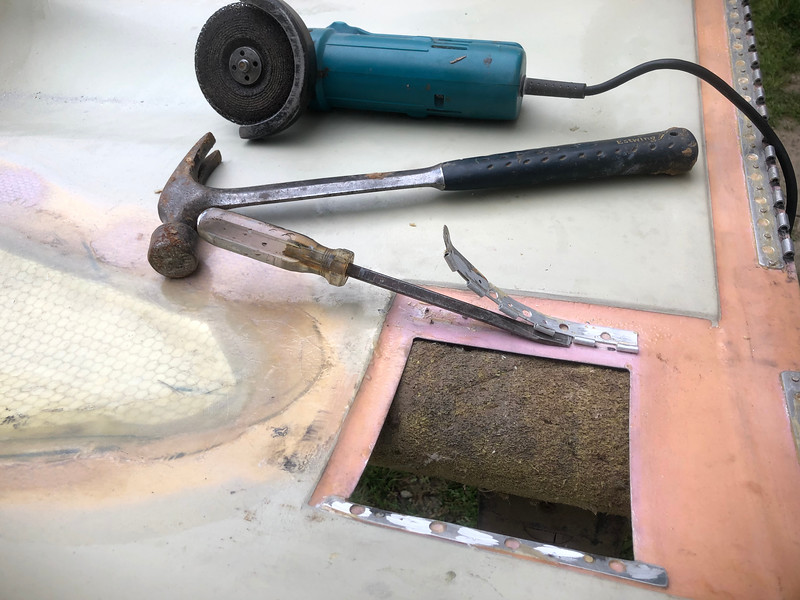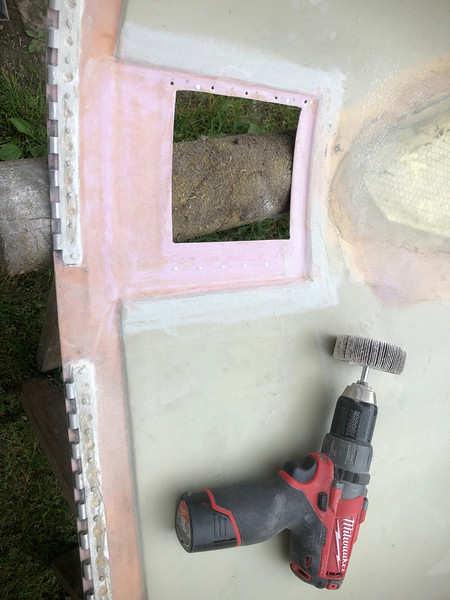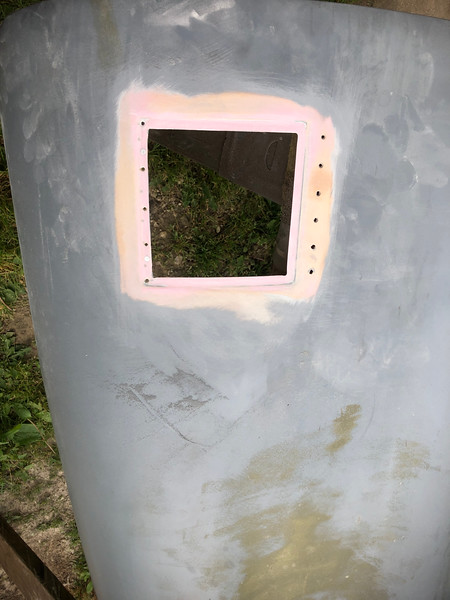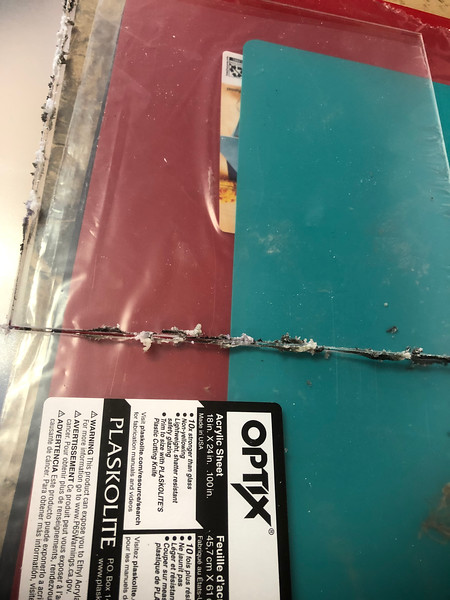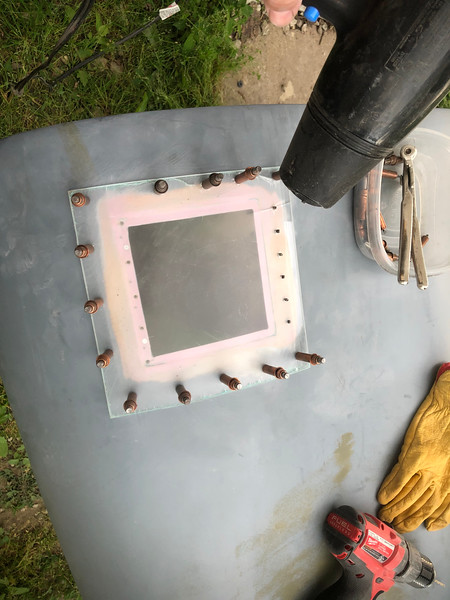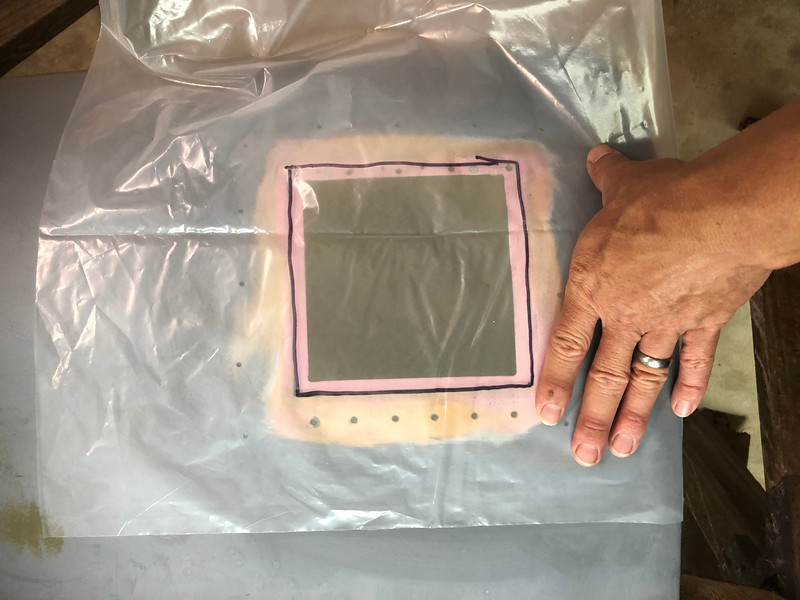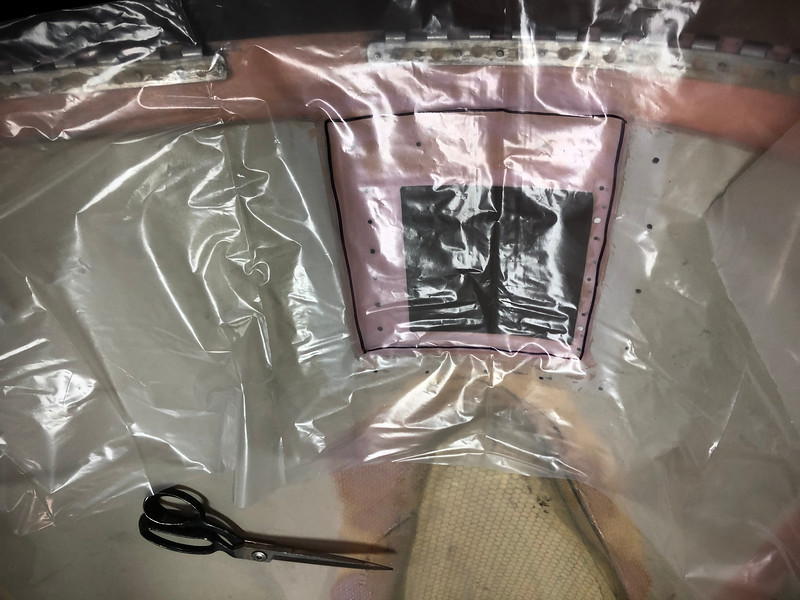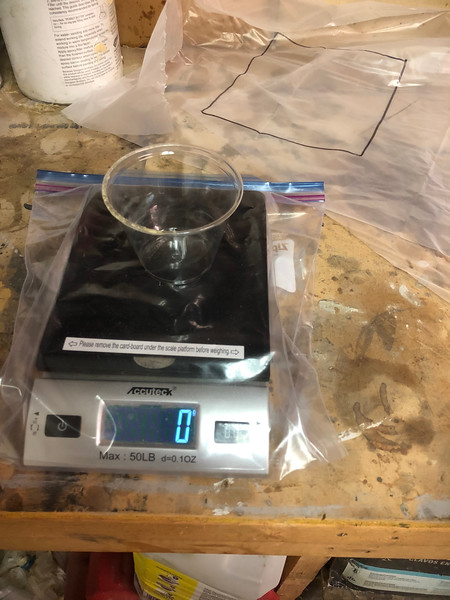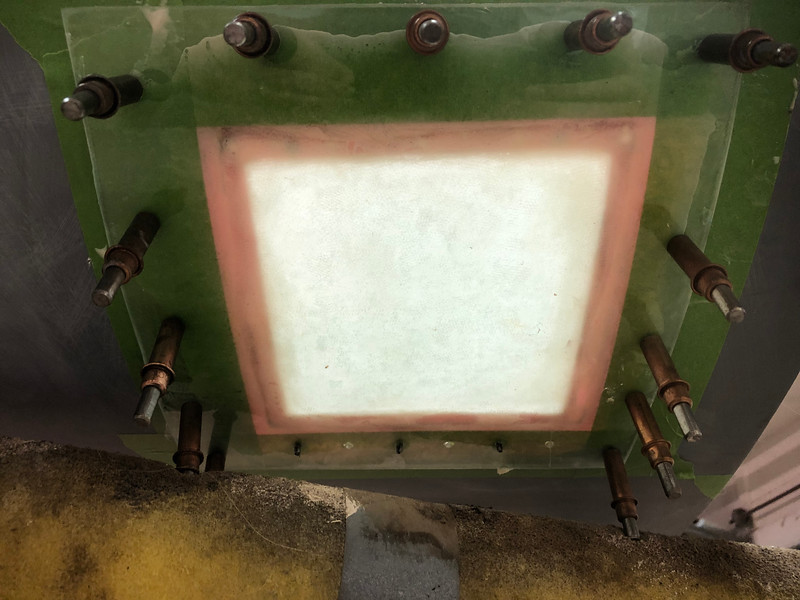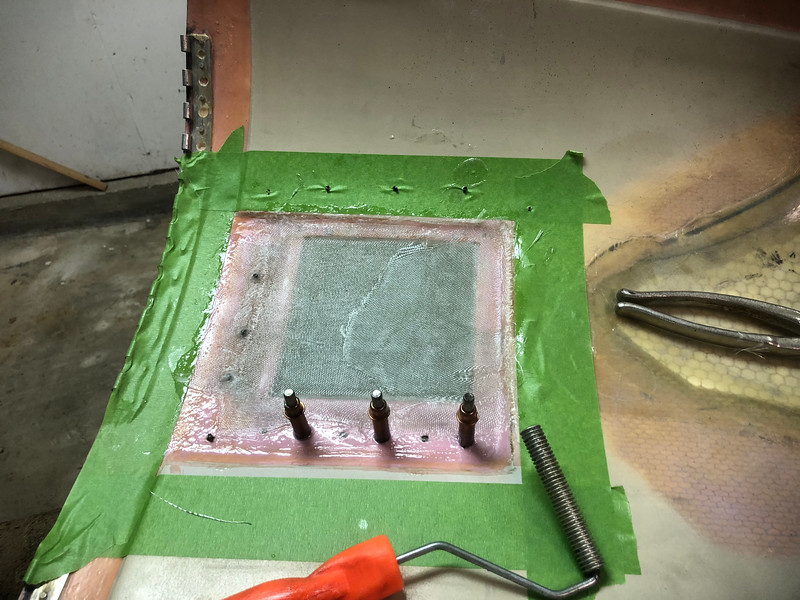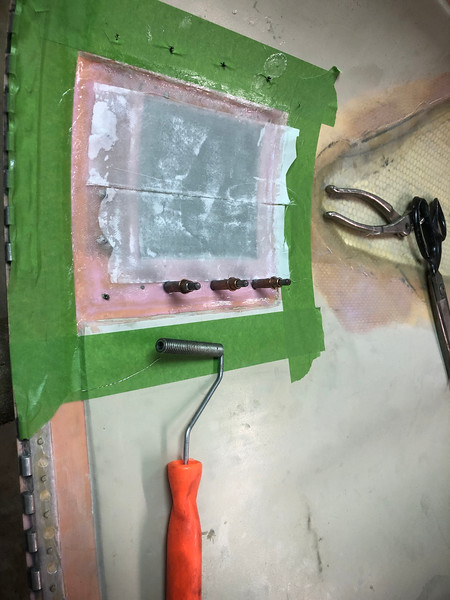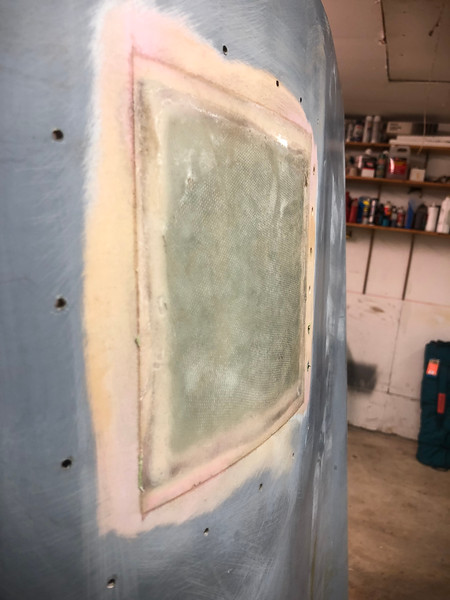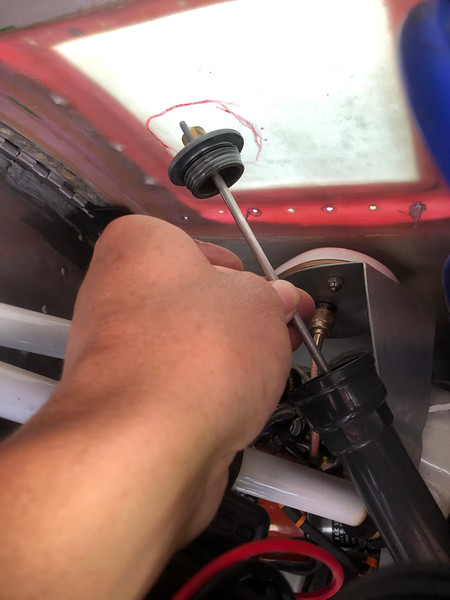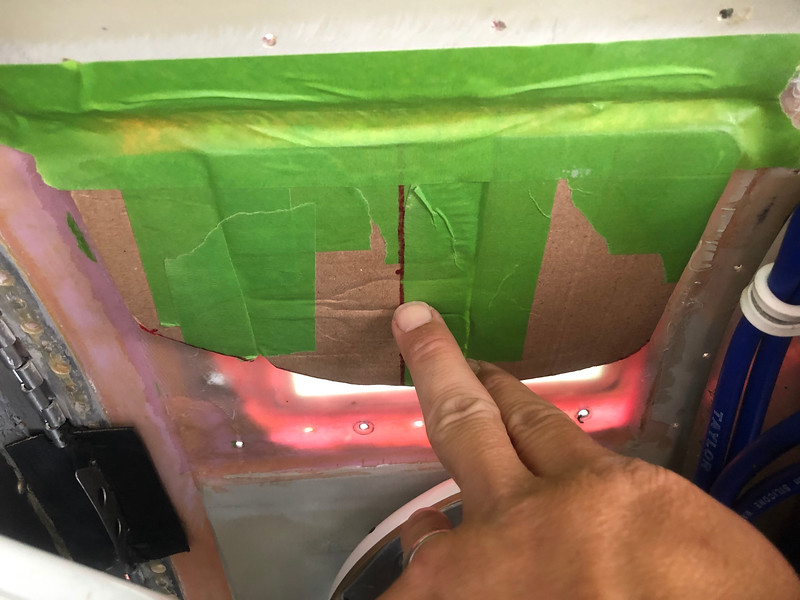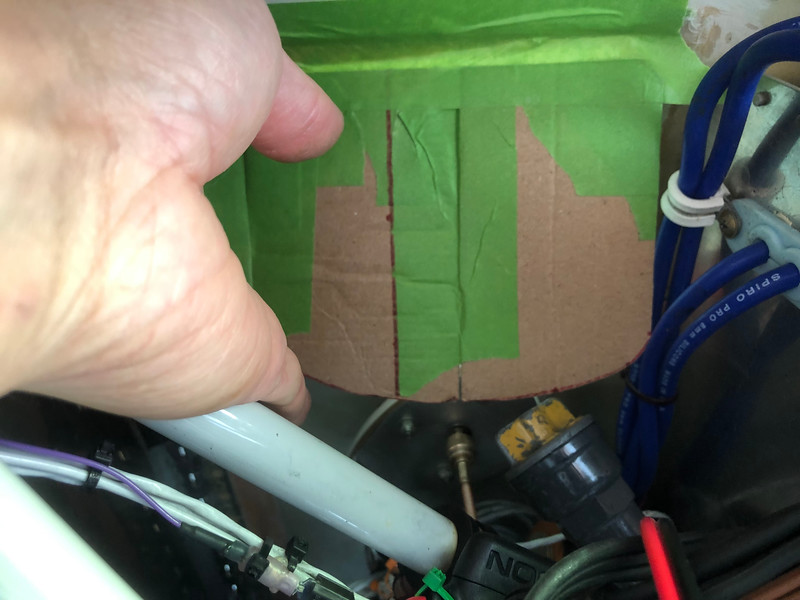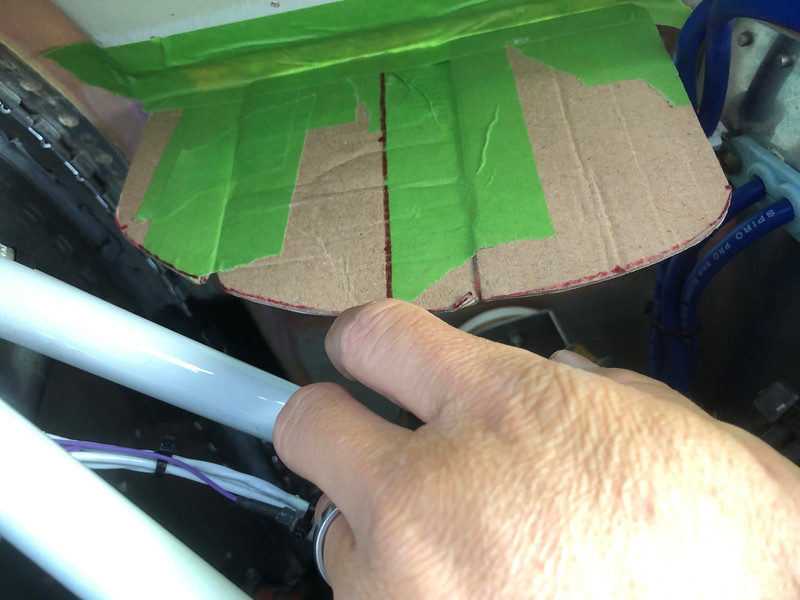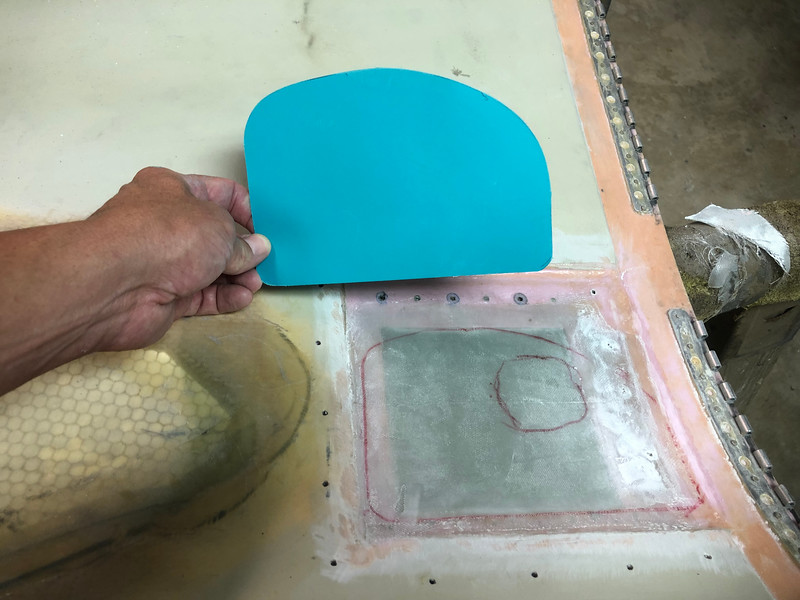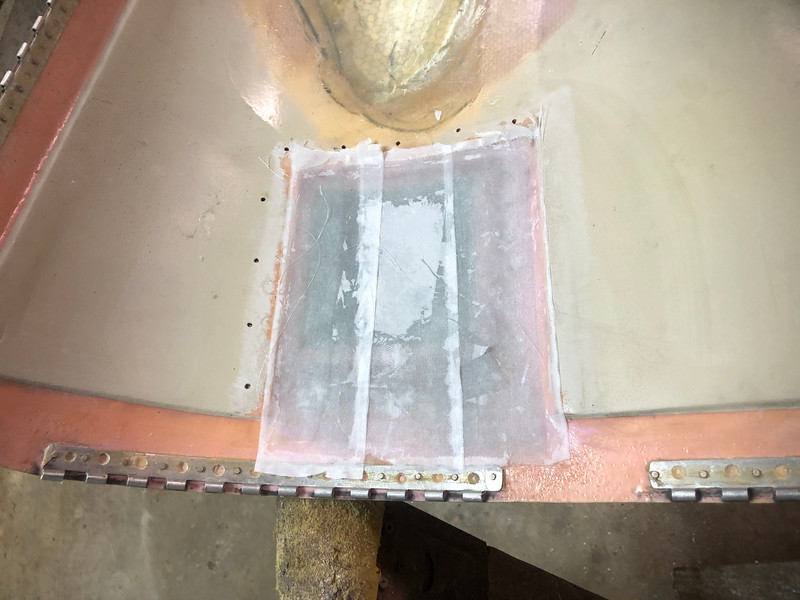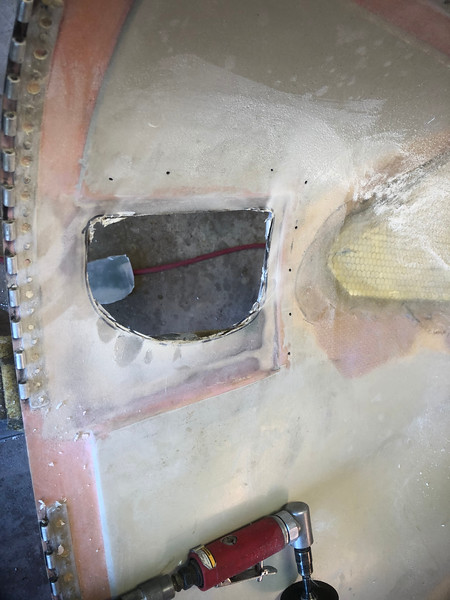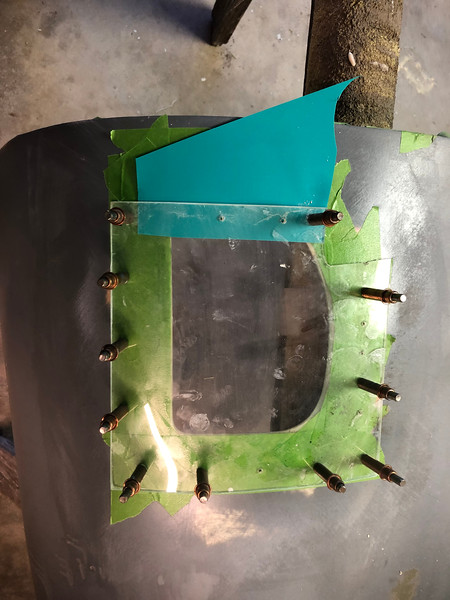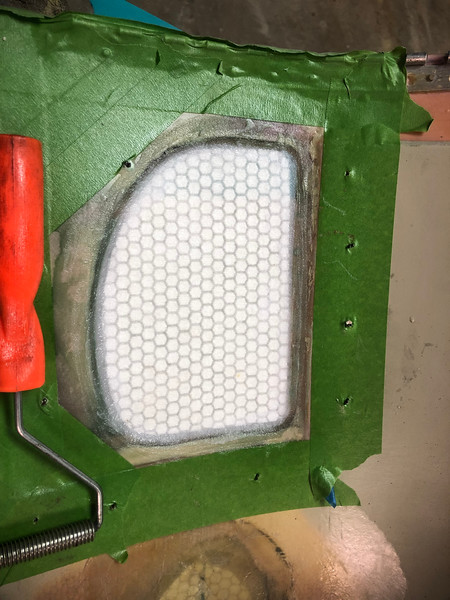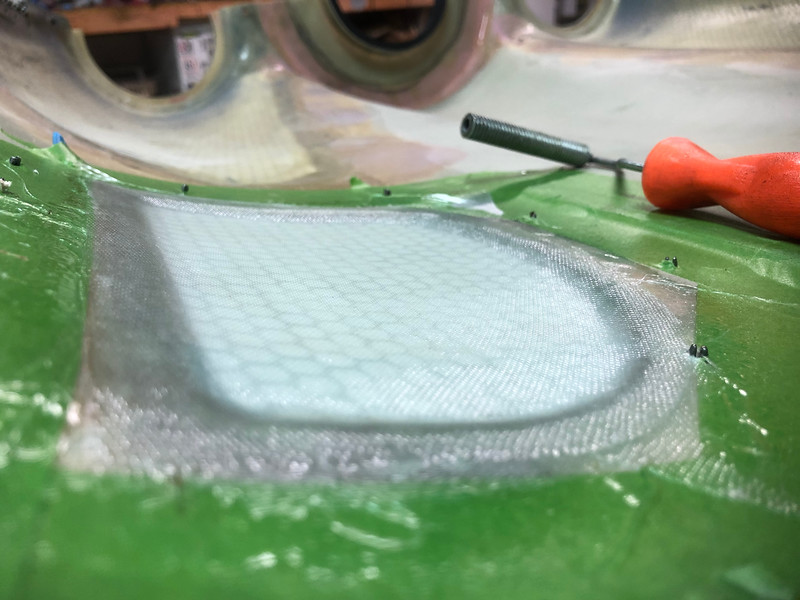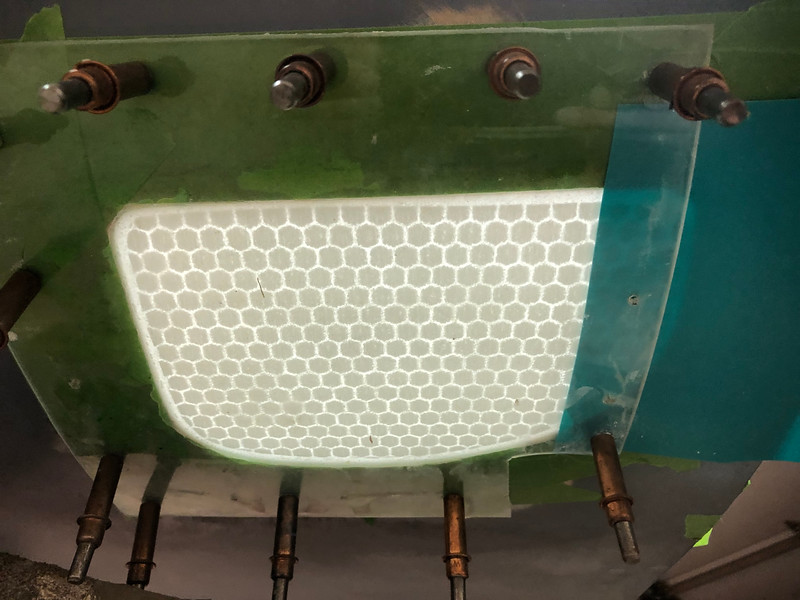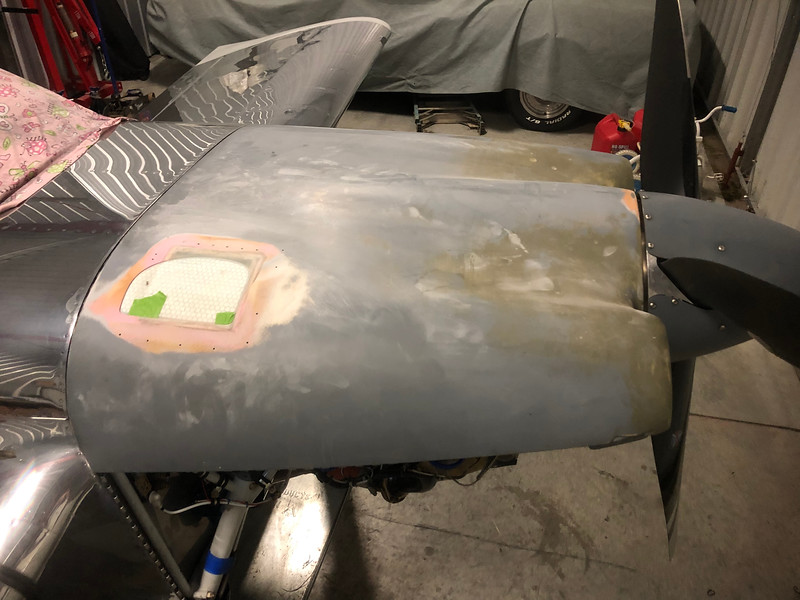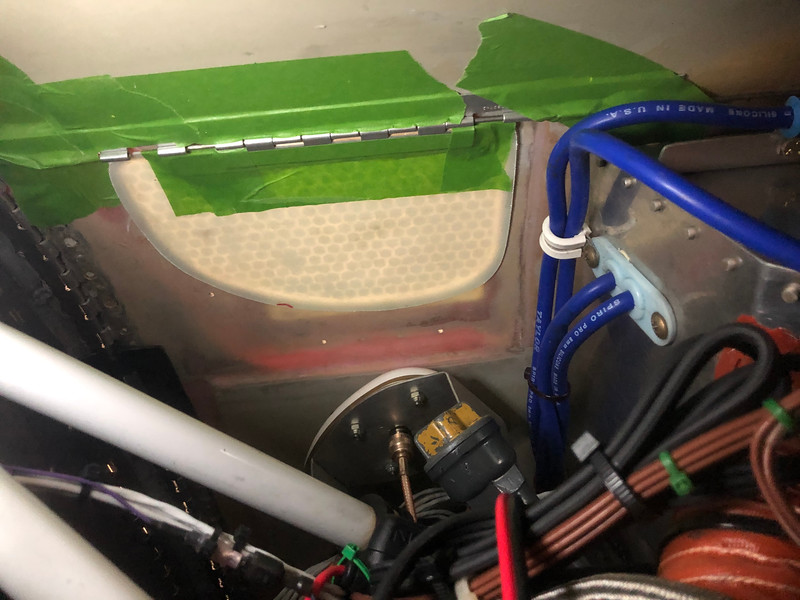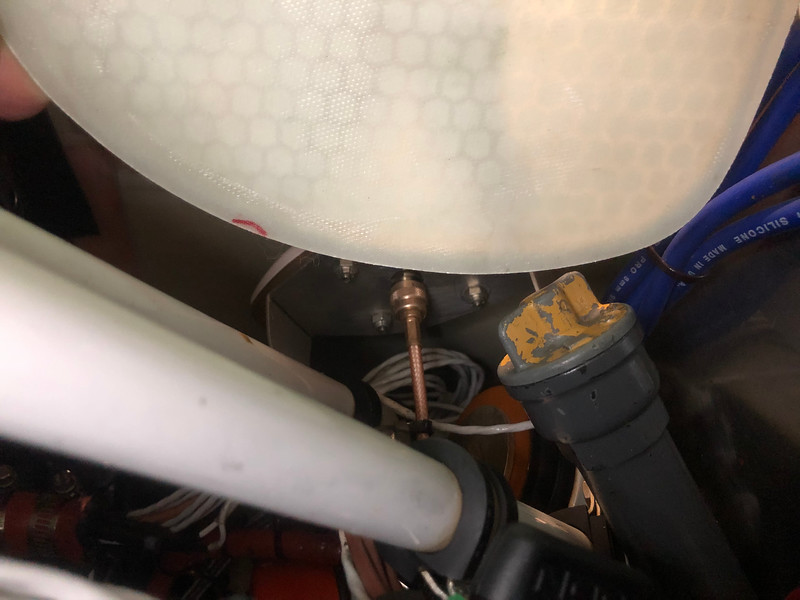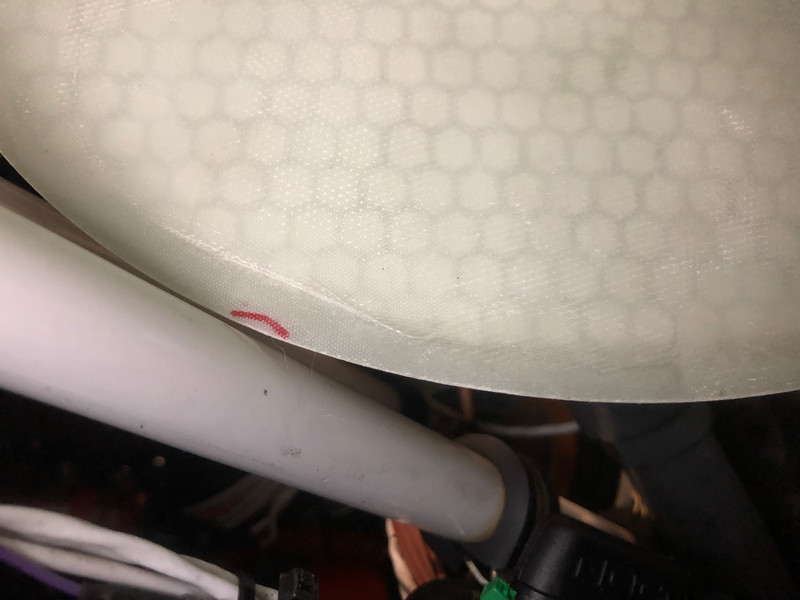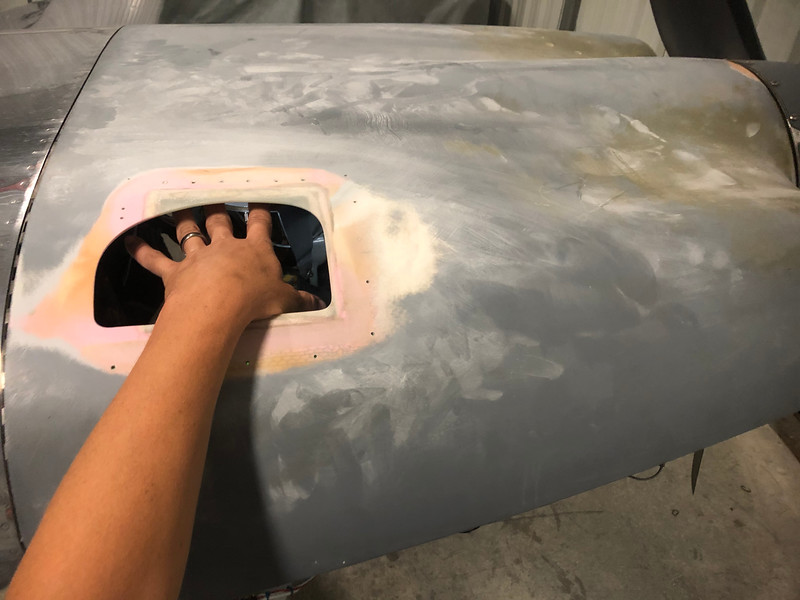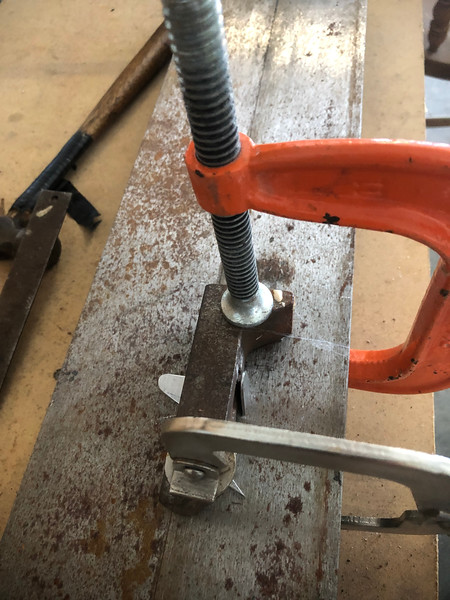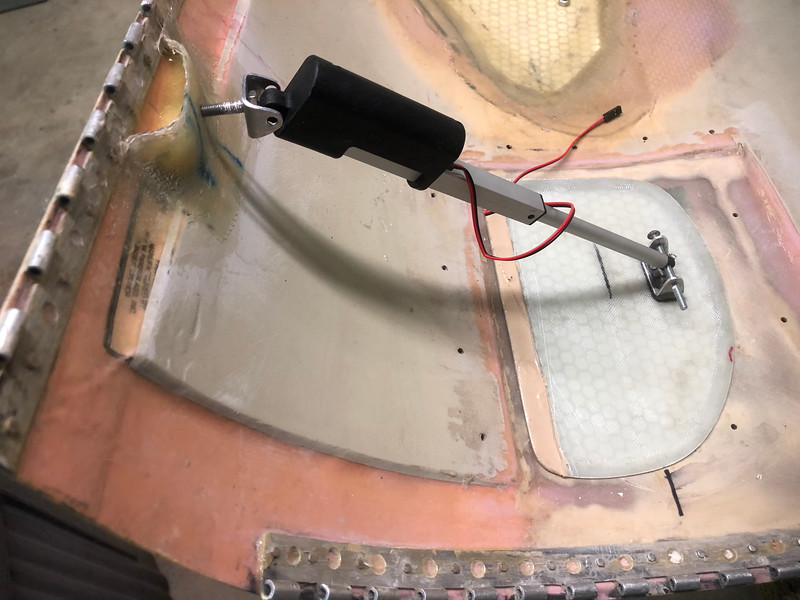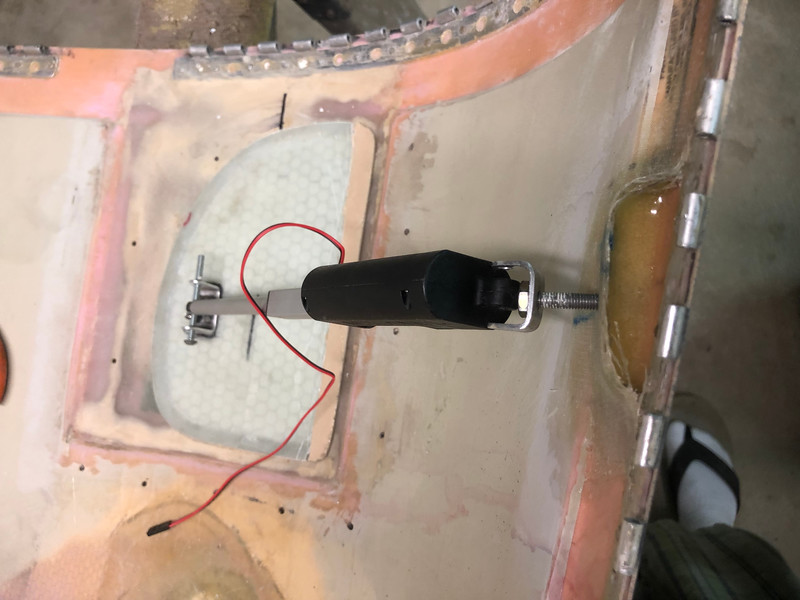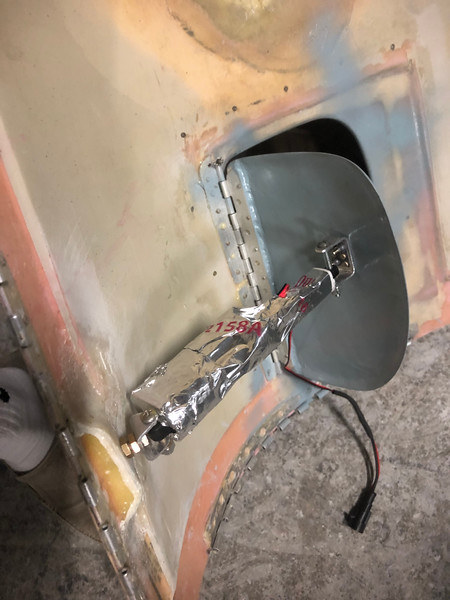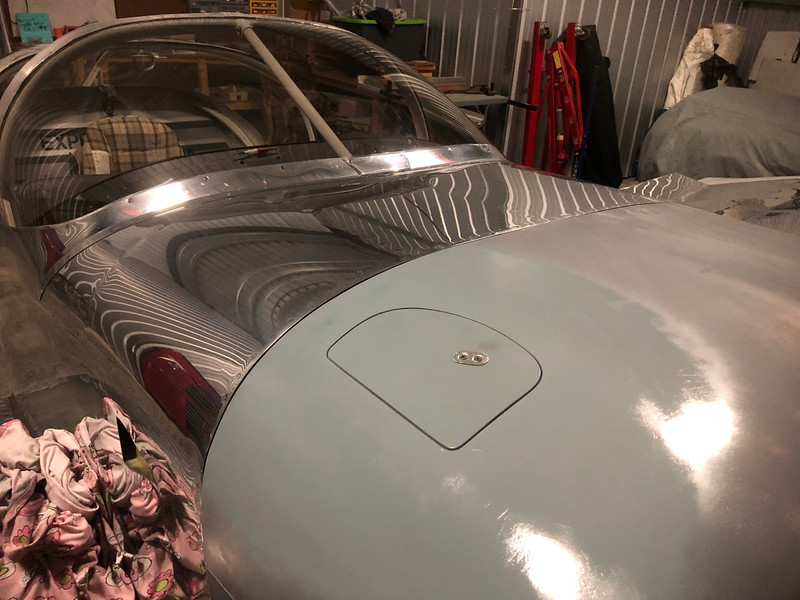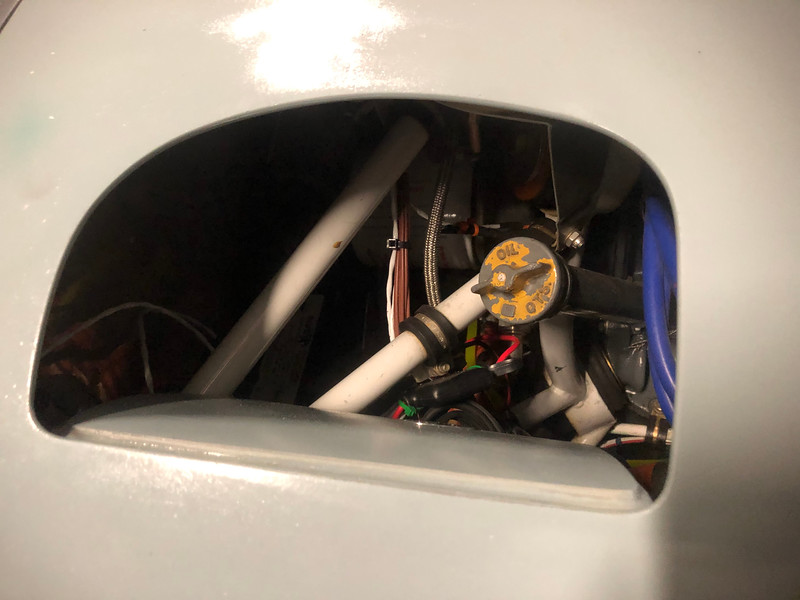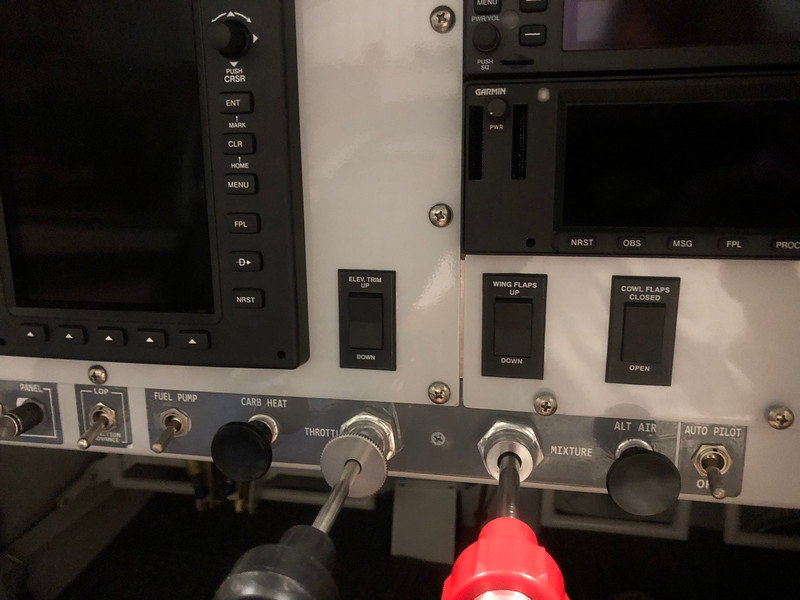I've been contemplating using the existing oil filler door in my upper cowling as a cowl flap. The hole is already there and my main goal is cooling on the ground with very little pressure differential between the upper and lower cowling. Extra cooling on climb out is another benefit.
Previous issues described in this post:
http://www.vansairforce.com/community/showthread.php?t=161338&page=6
I've spent a little time mocking up templates with cardboard but have narrowed things down a bit and time to "start making scrap." I rolled some scrap .063 since it's faster to make than glass.
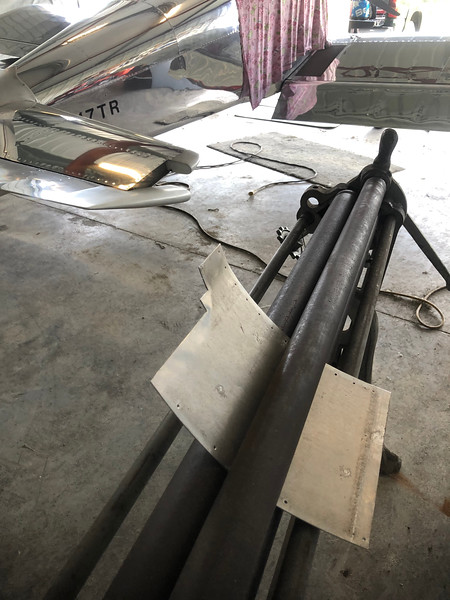
It fits the cowling contour pretty good with a little extra manipulation.
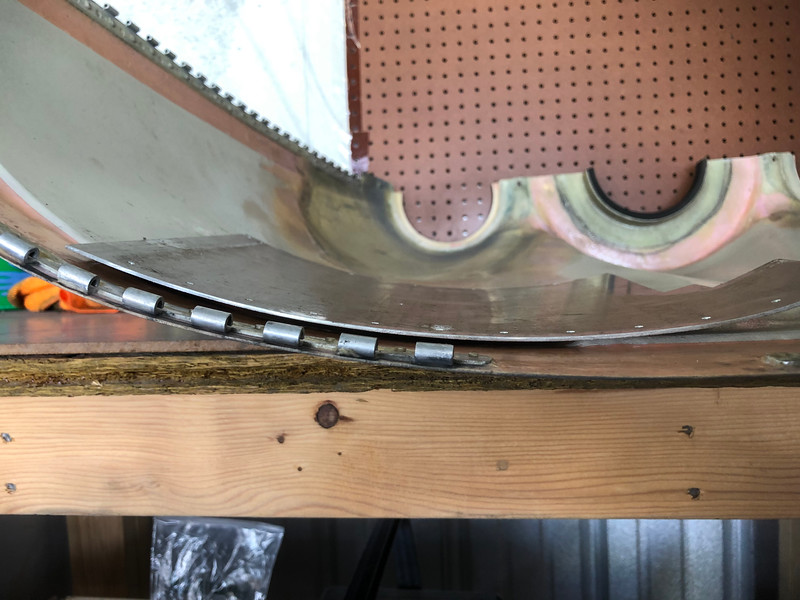
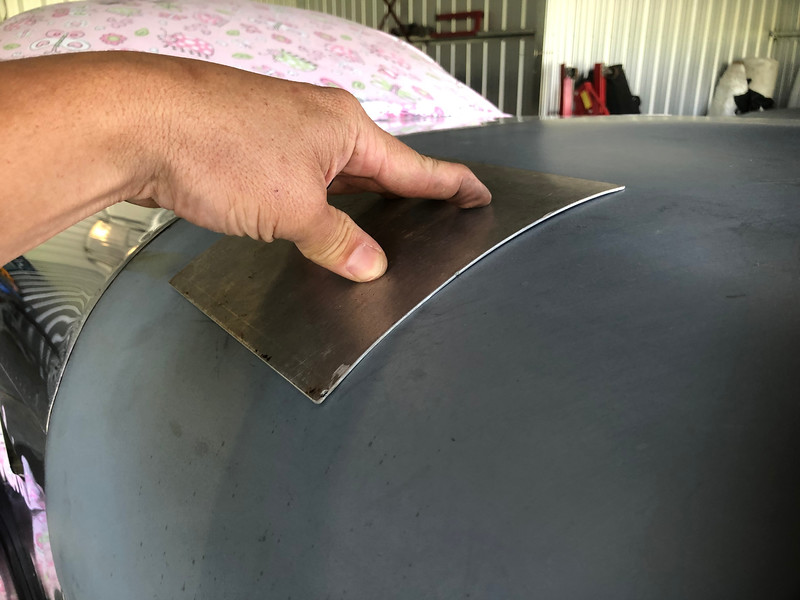
I'm down to 2 possible door styles. #1 is a one piece slider door that works like a sliding glass door sliding down using a track and linear actuator. It has to slide down because not enough room forward or aft. The bottom of the door must also slide in toward the centerline of the cowling because of the increased curve of the cowling.
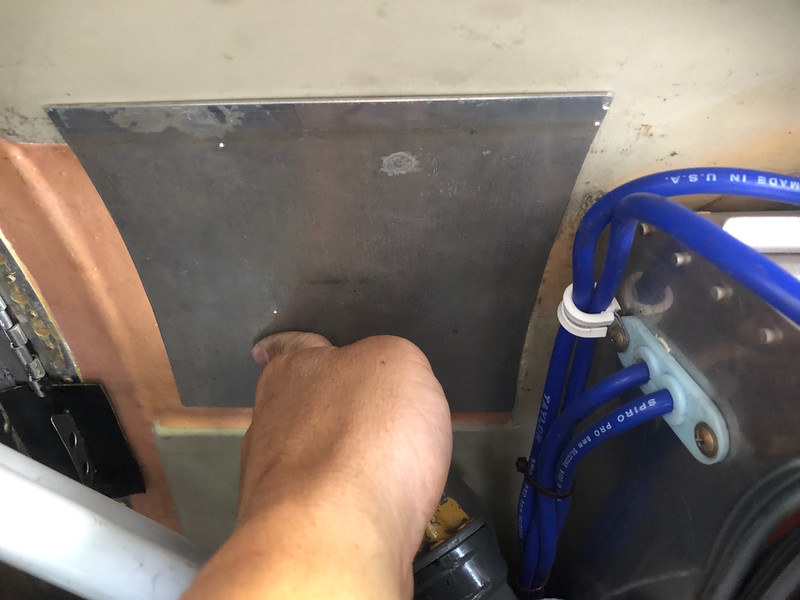
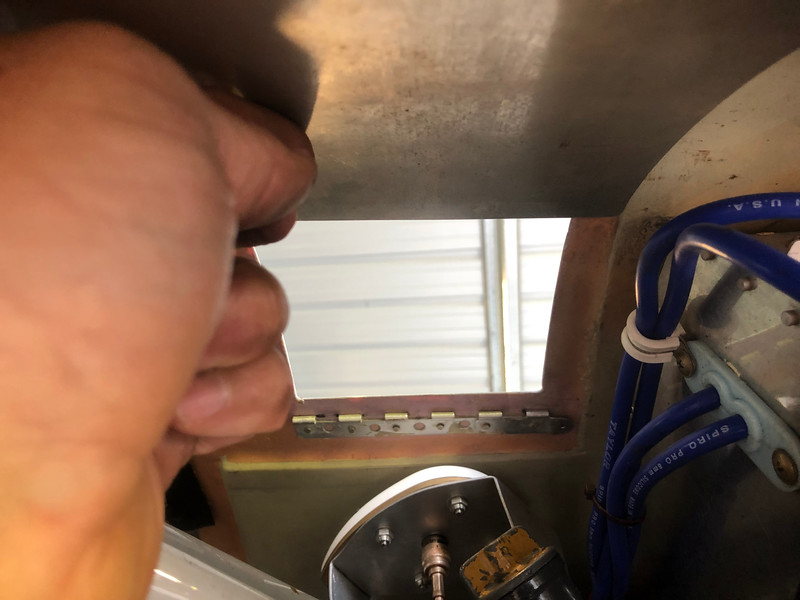
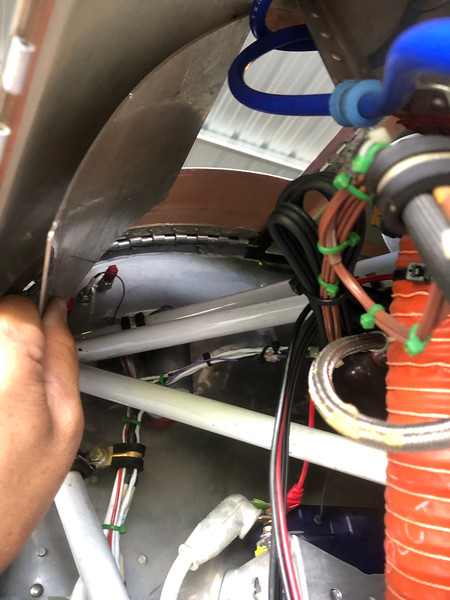
#2 idea is a 2 piece door design hinged on the upper and lower portions, excuse my errrr uh I mean my 3 year old boys drawings.
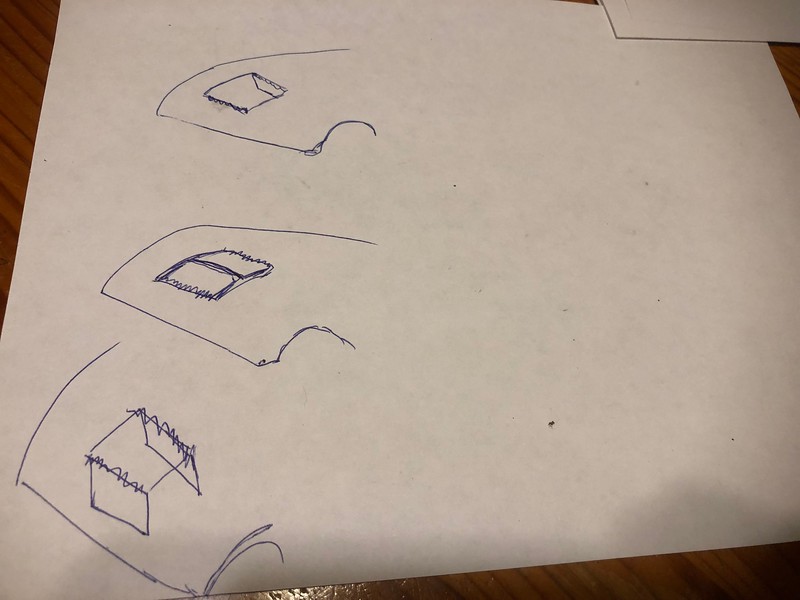
#1 issues making a curved track inside of the existing upper cowling radius and required linkage that can also make the door flush with the upper cowling.
#2 is much easier to make flush with the upper cowling, but what kind of linkage to use to make it work. Or do I use 2 linear actuators.
I'ld appreciate any thoughts to move me along!
Previous issues described in this post:
http://www.vansairforce.com/community/showthread.php?t=161338&page=6
I've spent a little time mocking up templates with cardboard but have narrowed things down a bit and time to "start making scrap." I rolled some scrap .063 since it's faster to make than glass.

It fits the cowling contour pretty good with a little extra manipulation.


I'm down to 2 possible door styles. #1 is a one piece slider door that works like a sliding glass door sliding down using a track and linear actuator. It has to slide down because not enough room forward or aft. The bottom of the door must also slide in toward the centerline of the cowling because of the increased curve of the cowling.



#2 idea is a 2 piece door design hinged on the upper and lower portions, excuse my errrr uh I mean my 3 year old boys drawings.

#1 issues making a curved track inside of the existing upper cowling radius and required linkage that can also make the door flush with the upper cowling.
#2 is much easier to make flush with the upper cowling, but what kind of linkage to use to make it work. Or do I use 2 linear actuators.
I'ld appreciate any thoughts to move me along!



